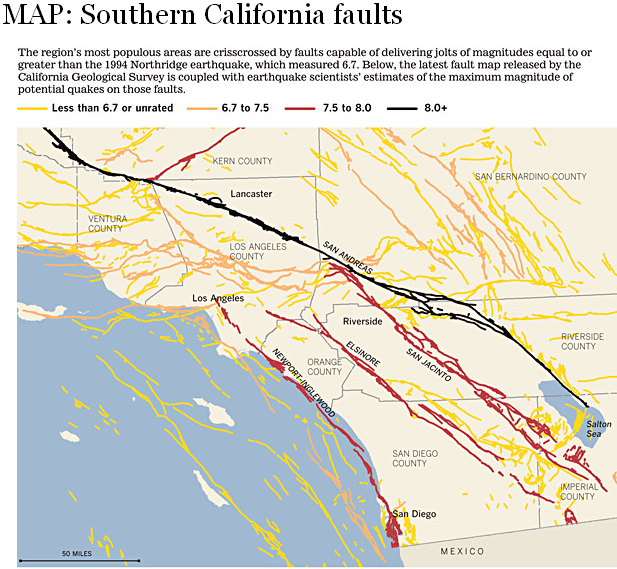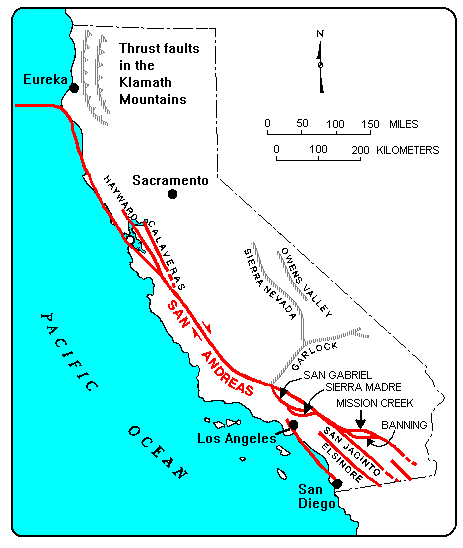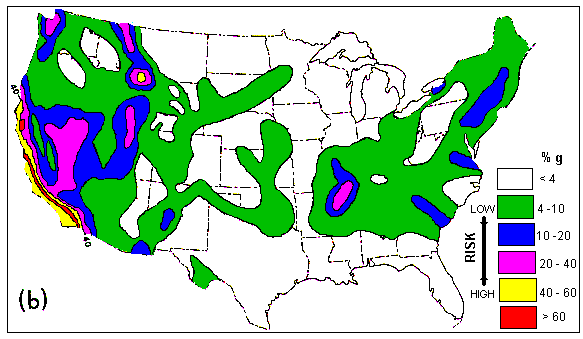It looks like you're using an Ad Blocker.
Please white-list or disable AboveTopSecret.com in your ad-blocking tool.
Thank you.
Some features of ATS will be disabled while you continue to use an ad-blocker.
9
share:
They have plan to restart one of the plant's two units at 70% power in time for the summer, when energy demand peaks in California ..
San Onofre insider says NRC should not allow nuclear restart!
Team 10 speaks with former NRC employee, insider
04/25/2013
www.10news.com...
San Onofre insider says NRC should not allow nuclear restart!
Team 10 speaks with former NRC employee, insider
04/25/2013
SAN DIEGO - For the first time, a source from inside the San Onofre nuclear power plant has come forward to warn that restarting the power plant is too dangerous.
"There is something grossly wrong," said the inside source, a safety engineer who worked at San Onofre and has 25 years in the nuclear field.
The source, who requested anonymity, is not alone in concerns over the safety San Onofre Nuclear Generating Station (SONGS).
*Click here for a timeline of San Onofre incidents
"The tubes operate under very high pressure," Hopenfeld said, adding there is no protection provided between the tubes, which are placed in rows, to keep them from hitting each other.
Our sources said the redesign of the generators had unintended consequences. Tubes began hitting each other, creating cracks.
"These tubes were hitting each other -- that's dangerous," said Team 10's anonymous source.
He wants to remain anonymous because he told Team 10 he fears for his safety.
"When they made these changes, they did not look at the academic research nor use critical question and an investigative attitude," said the source.
Hopenfeld and the inside source said the tubes' movement -- banging into each other -- led to unprecedented tube failures.
Of 19,400 tubes, a NRC report found more than 17 percent were damaged.
Hopenfeld said the worst case scenario is a main steam line break, which he says could be caused by tubes cracking, the tube walls thinning or metal fatigue.
The anonymous insider and Hopenfeld said if there is a main steam line break, there is potential for the reactor core to overheat - which could mean a full or partial meltdown.
"Many tubes, and I don't know how many, have exhausted their fatigue life - they have no fatigue life left," Hopefeld said.
Just like the airline industry, the effect of fatigue on metal is something of concern in the nuclear industry.
www.10news.com...
edit on 27-4-2013 by MariaLida
because: (no reason given)
reply to post by MariaLida
I saw that Arnie Gunderson video that described the breakdown of the tubes and why. That plant CAN NOT be restarted without replacing those thingamagigs. I don't know what they are called but San Onofre replaced them a year ago and they are for sh*t. There is a critical design defect in that the tubes vibrate and collide with each other causing erosion and breakdown.
Trust and believe the citizens around the plant are up in arms and they will attempt to thwart any re-starting of that plant. The only reason it hasn't been restarted is because of the citizen uproar.
I saw that Arnie Gunderson video that described the breakdown of the tubes and why. That plant CAN NOT be restarted without replacing those thingamagigs. I don't know what they are called but San Onofre replaced them a year ago and they are for sh*t. There is a critical design defect in that the tubes vibrate and collide with each other causing erosion and breakdown.
Trust and believe the citizens around the plant are up in arms and they will attempt to thwart any re-starting of that plant. The only reason it hasn't been restarted is because of the citizen uproar.
reply to post by GrantedBail
Yap and one more very big danger ..
Edison says nuclear plant can withstand up to 7.0 quake, I think that is not enough and EQ 7.0 + represents an enormous threat ..
Also that enormous risk is just unacceptable becouse SoCal area expecting strong seizmic activity & EQ's in times ahead ..
San Onofre nuclear plant can withstand up to 7.0 quake, is protected by a 25-foot tsunami wall, Edison says
latimesblogs.latimes.com...
Yap and one more very big danger ..
Edison says nuclear plant can withstand up to 7.0 quake, I think that is not enough and EQ 7.0 + represents an enormous threat ..
Also that enormous risk is just unacceptable becouse SoCal area expecting strong seizmic activity & EQ's in times ahead ..
San Onofre nuclear plant can withstand up to 7.0 quake, is protected by a 25-foot tsunami wall, Edison says
Operators of the concrete-domed San Onofre nuclear plant Monday were trying to reassure jittery Southern California residents that the nuclear disaster unfolding in Japan won't happen here.
The 84-acre generating station in the northern corner of San Diego County is built to withstand a magnitude 7.0 earthquake, said Gil Alexander, a spokesman for the generation station's operator, Southern California Edison. That is greater than the 6.5 shaker that scientists predicted could strike the plant before it was built 42 years ago, he said. But it's less than the 8.9 quake that hit Japan last week.
A 25-foot-high "tsunami wall" of reinforced concete was also erected between the plant and the adjacent ocean, a height based on scientists' best estimates of the potential threat, he said. The geological fault most likely to directly threaten San Onofre lies about 5 miles offshore, Alexander said.
latimesblogs.latimes.com...
edit on 27-4-2013 by
MariaLida because: (no reason given)
Earthquake Faults in California and Seismic Hazard Maps




www.latimes.com...
www.moreno-valley.ca.us...
earthquake.usgs.gov...
redirect.conservation.ca.gov...




www.latimes.com...
www.moreno-valley.ca.us...
earthquake.usgs.gov...
redirect.conservation.ca.gov...
More than 7 million people live within 50 miles of the nuclear plant ..
Irvine City Council Meetings
sanonofresafety.org...
Irvine City Council Meetings
Nelson Mar, PhD (former Senior Engineer for the original design of San Onofre Units 2 & 3), said San Onofre is not designed for current earthquake or tsunami risks. See 3/27/12 Irvine City Council meeting video.
San Onofre represents an unacceptable risk to public health and safety and we need a safer more reliable energy future. “We need to plan the quickest possible solution”, said Councilman Larry Agran in his compelling remarks at the 3/27/2012 City Council meeting.
sanonofresafety.org...
edit on 28-4-2013 by MariaLida because: (no reason given)
Activists Grill NRC on San Onofre Restart - Excerpts
Apr 5, 2013
Apr 5, 2013
edit on 28-4-2013 by MariaLida because: (no reason given)
reply to post by GrantedBail
Some more videos and info ..
Possible Developments for next The 'Big One' SoCal on San Andreas Fault Line!
Some more videos and info ..
Possible Developments for next The 'Big One' SoCal on San Andreas Fault Line!
edit on 28-4-2013 by MariaLida because: (no reason given)
Thanks for catching this story OP. I just read through the full text at 10news and this is absurd. Damage already? MAJOR new systems failing after
only 11 months to the point of requiring a shutdown of a critical power source for the L.A. area? On.. but Edison says it's all fine and dandy now so
we ought to just accept that. Well, with these concerns, I'd say there ought to be at least one independent outside team brought into that
place for a proper safety inspection and audit. Not the NRC who has as much stake in promoting the nuclear power industry as regulation of it ..and
absolutely not JUST SCE who will simply say "oops!" and point to the manufacturer and contractors who installed it all if it fails.
As someone with family within 100 miles of that thing, I'd like a WHOLE lot more than just a promise to run 70% power to 'minimize risks'. Fukushima showed in unbelievable reality just what happens when a 1:Million failure scenario actually happens. It sounds like this is far from odds that long as it stands.
Perhaps if they are held to account...like criminally, and with 25-Life prison involved for the threat and damage to life it will cause in the event of failure in the ways others currently say are predictable? Perhaps that would make this a little more personal for the people saying it's just fine to run at partial power. If it can't run FULL? I say it shouldn't run AT ALL.
As someone with family within 100 miles of that thing, I'd like a WHOLE lot more than just a promise to run 70% power to 'minimize risks'. Fukushima showed in unbelievable reality just what happens when a 1:Million failure scenario actually happens. It sounds like this is far from odds that long as it stands.
Perhaps if they are held to account...like criminally, and with 25-Life prison involved for the threat and damage to life it will cause in the event of failure in the ways others currently say are predictable? Perhaps that would make this a little more personal for the people saying it's just fine to run at partial power. If it can't run FULL? I say it shouldn't run AT ALL.
That must be the riskiest place on earth to build a nuclear power plant.
new topics
-
Thanking a rosemary plant
General Chit Chat: 3 hours ago -
Unidentified Flying Objects Over U.S. Military Bases in Northeast UK, as of roughly 11 a.m. CST.
Aliens and UFOs: 4 hours ago -
Holy Cow! Erm...Six Legged Turkey!!
World Sports: 8 hours ago -
Ben Habib has Left Reform UK
Regional Politics: 11 hours ago -
Turkey Day Rhyme…
Short Stories: 11 hours ago
top topics
-
Vladimir Putin's speech at the meeting of the CSTO Collective Security Council
World War Three: 16 hours ago, 9 flags -
NIH Chief Confesses COVID Initiatives Were "Completely Made Up " OMG Investigates
Health & Wellness: 12 hours ago, 9 flags -
Unidentified Flying Objects Over U.S. Military Bases in Northeast UK, as of roughly 11 a.m. CST.
Aliens and UFOs: 4 hours ago, 9 flags -
Can someone please translate Biden's speech?
US Political Madness: 12 hours ago, 8 flags -
Awesome Dip Recipe
Food and Cooking: 16 hours ago, 5 flags -
Turkey Day Rhyme…
Short Stories: 11 hours ago, 5 flags -
Ben Habib has Left Reform UK
Regional Politics: 11 hours ago, 4 flags -
Thanking a rosemary plant
General Chit Chat: 3 hours ago, 3 flags -
Holy Cow! Erm...Six Legged Turkey!!
World Sports: 8 hours ago, 2 flags
active topics
-
Results of the use of the Oreshnik missile system in Dnepropetrovsk
World War Three • 244 • : worldstarcountry -
Unidentified Flying Objects Over U.S. Military Bases in Northeast UK, as of roughly 11 a.m. CST.
Aliens and UFOs • 16 • : BeyondKnowledge3 -
V.P. Kamala Harris releases a video and nobody understands why
US Political Madness • 94 • : TheMisguidedAngel -
Why isn't Psychiatry involved?
Social Issues and Civil Unrest • 18 • : BeTheGoddess2 -
Russia Ukraine Update Thread - part 3
World War Three • 6891 • : worldstarcountry -
-@TH3WH17ERABB17- -Q- ---TIME TO SHOW THE WORLD--- -Part- --44--
Dissecting Disinformation • 3397 • : Crazierfox -
The Party of Peace - Trump Cabinet Picks Targeted with Death Threats
US Political Madness • 47 • : Astrocometus -
Vladimir Putin's speech at the meeting of the CSTO Collective Security Council
World War Three • 65 • : TheMisguidedAngel -
Thanking a rosemary plant
General Chit Chat • 2 • : visitedbythem -
Holy Cow! Erm...Six Legged Turkey!!
World Sports • 4 • : JJproductions
9
